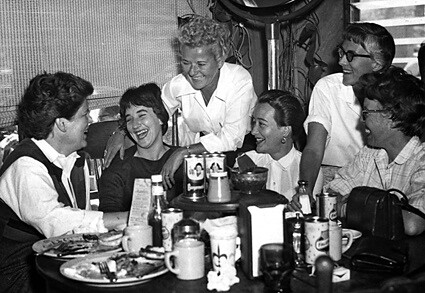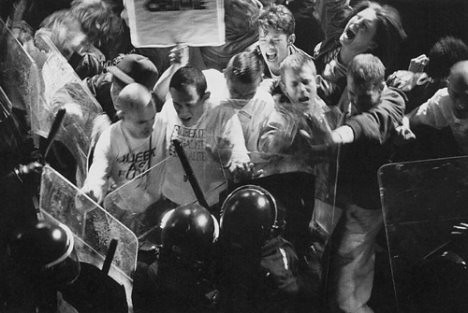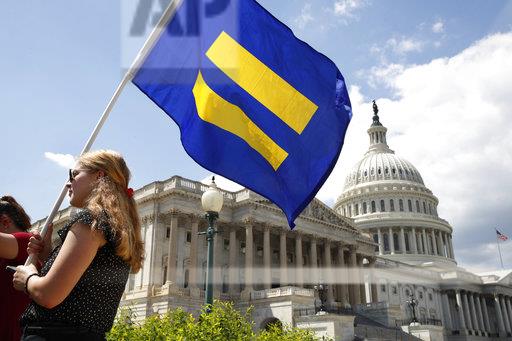June marks Pride Month, a month to celebrate those who fall under the LGBTQ spectrum.
This June also marks the 50th celebration of the Stonewall Riots, which saw people from LGBTQ communities battle back against pressure from the police in Greenwich Village, New York City in June 1969.
The principal fight for LGBTQ rights in America started calmly with the work of two main groups during the 1950s that campaigned for respect and acknowledgment for gay men and lesbians.
The Mattachine Society, and the Daughters of Bilitis which was formed in 1955 in San Francisco and gave lesbians a public activity outside of going to bars.
While the two gatherings appear to be exceptionally mellow by the present norms, they were extremely radical for their era. During this time all 50 states had laws against same-sex sexual conduct.

Also, during this time gay men and lesbians were routinely terminated from their employment if their supervisor or colleagues found out about their sexuality.
These laws condemning same-sex action vanished step by step from state corrective codes throughout the years, however, the U.S. Supreme Court only dictated these motions as unconstitutional in 2003.
The Stonewall Riots occurred in June of 1969. The event inspired a newer generation of gay men and woman alongside transgender individuals who were no longer okay with simply requesting equality but demanded it. The riots lasted three nights and culminated in an event that rocked the United States.
A group of people that had remained mostly closeted were now demanding to be heard. After a battle of this magnitude, the country could no longer pretend they didn’t exist.
The events that took place at Stonewall eventually helped develop the Gay Liberation and began to question the common American opinion at the time. These younger LGBTQ members seemed radical to their own predecessors.

They were no longer comfortable with laws at the time but called upon huge social change in the areas of heterosexism, misogyny, bigotry, homophobia and eventually transphobia.
What we call the “fight for LGBTQ rights” in the U.S. is a result of lawful and demanded changes by groups in the 1950s.
Related Story:
This movement called for the decriminalization of same-sex sexual activities, making it unlawful to terminate gay men and lesbians in the working environment and lodging.
It also enabled gay men and lesbians the right to legitimately adopt and foster children, and it ended decades of police harassment of gay and lesbian individuals; all of which culminated in the permitting of same-sex couples to wed.
The issues that were birthed in the ’50s were taken up by the gay rights advocates during the 1970s. While the movement has made a lot of gains including the eradication of “Don’t Ask, Don’t Tell” and legalizing same-sex marriage on June 26, 2015, there is still a long road ahead.

Still today, there is no government law criminalizing discrimination based on sexual orientation in housing and the workplace. In 28 states, you can be terminated for being lesbian or gay. In 30 states, you can be terminated for being a transgender person.
While same-sex couples can get married, numerous adoption offices can still turn down same-sex couples.
Those who served in the military and were dishonorably discharged for being gay are now fighting to have this dishonor removed while the current administration is taking up arms against trans individuals fighting for the United States.
While the trans movement has taken a step up in recent years, the Trump administration has been revoking Obama era protections that restricted discrimination of transgender individuals.
While terms such as gay, lesbian, transgender, bisexual and many more are relatively new to our country and the world there is no denying the impact LGBTQ individuals have made on the history of our country and the world.

Just because we didn’t have these labels and identifications years prior doesn’t imply that those individuals did not exist.
The Stonewall Inn is still located in Greenwich Village, a neighborhood of Lower Manhattan in New York City.
On May 29, 2015, The New York City Landmarks Preservation Commission announced it would officially debate labeling Stonewall as a landmark, the first city location to be considered based on its LGBTQ cultural significance alone.

On June 23, 2015, this vision became a reality. Stonewall became the first LGBTQ-history site in the United States listed on the State and National Registers of Historic Places, and the first LGBTQ-history location in New York City.
Finally, in June 2016, President Barack Obama recognized a 7.7 acre area around the Inn as the Stonewall National Monument, the first LGBTQ U.S. National Park site.

The Stonewall riots that took place fifty years ago marked a shift from calmly requesting equality to a full-on movement stating loud and proud, “We are here, we are queer, get used to it” that is still going on today.
As celebrations continue throughout the month of June, LGBTQ people celebrate their numerous victories alongside the memories of those lost over the years due to prejudice and hate-fueled violence.
Even in the face of an administration building stronger hurdles, the LGBTQ community parades on, no stranger to adversity.
James Novotny
Staff Writer

